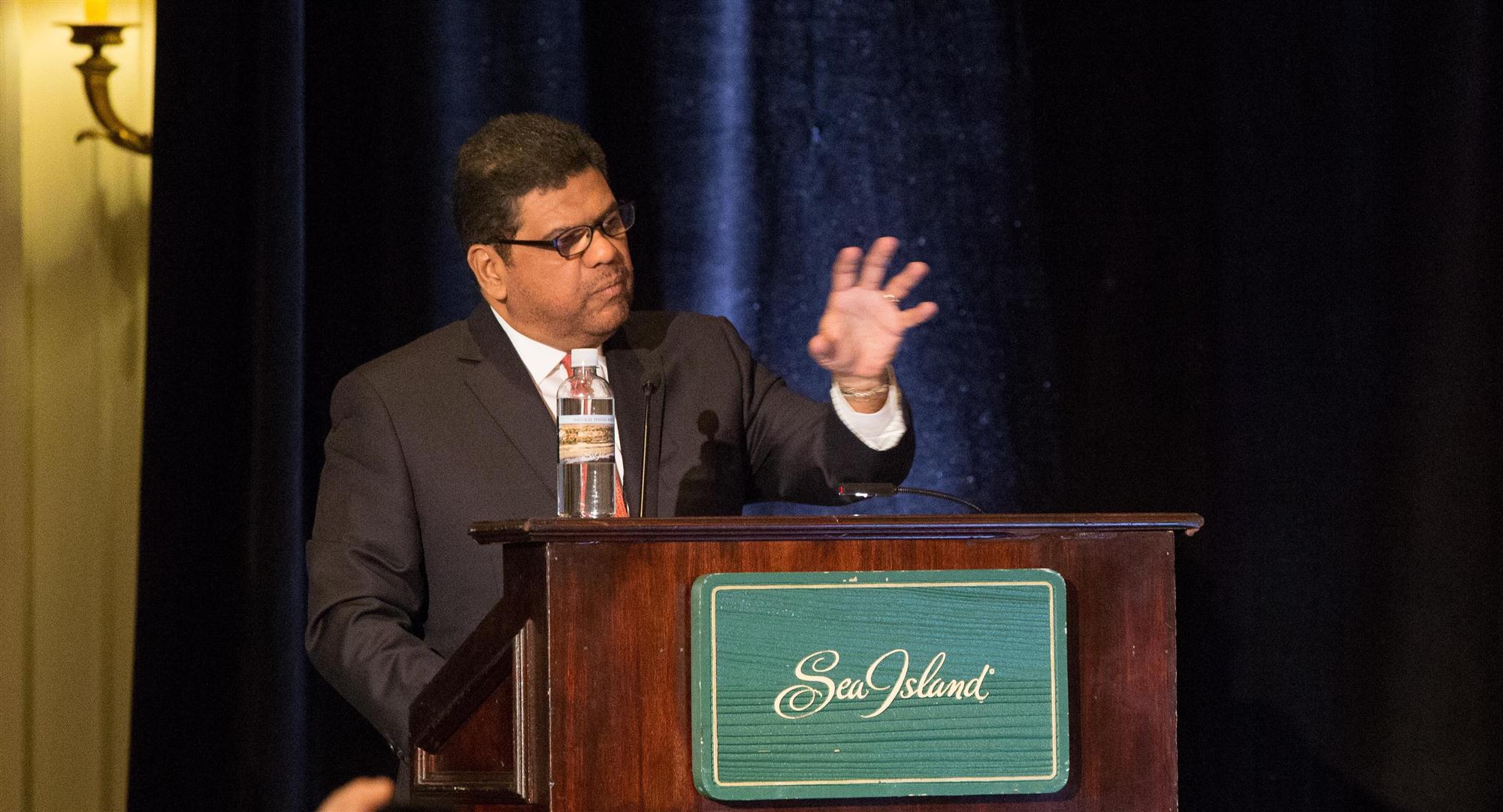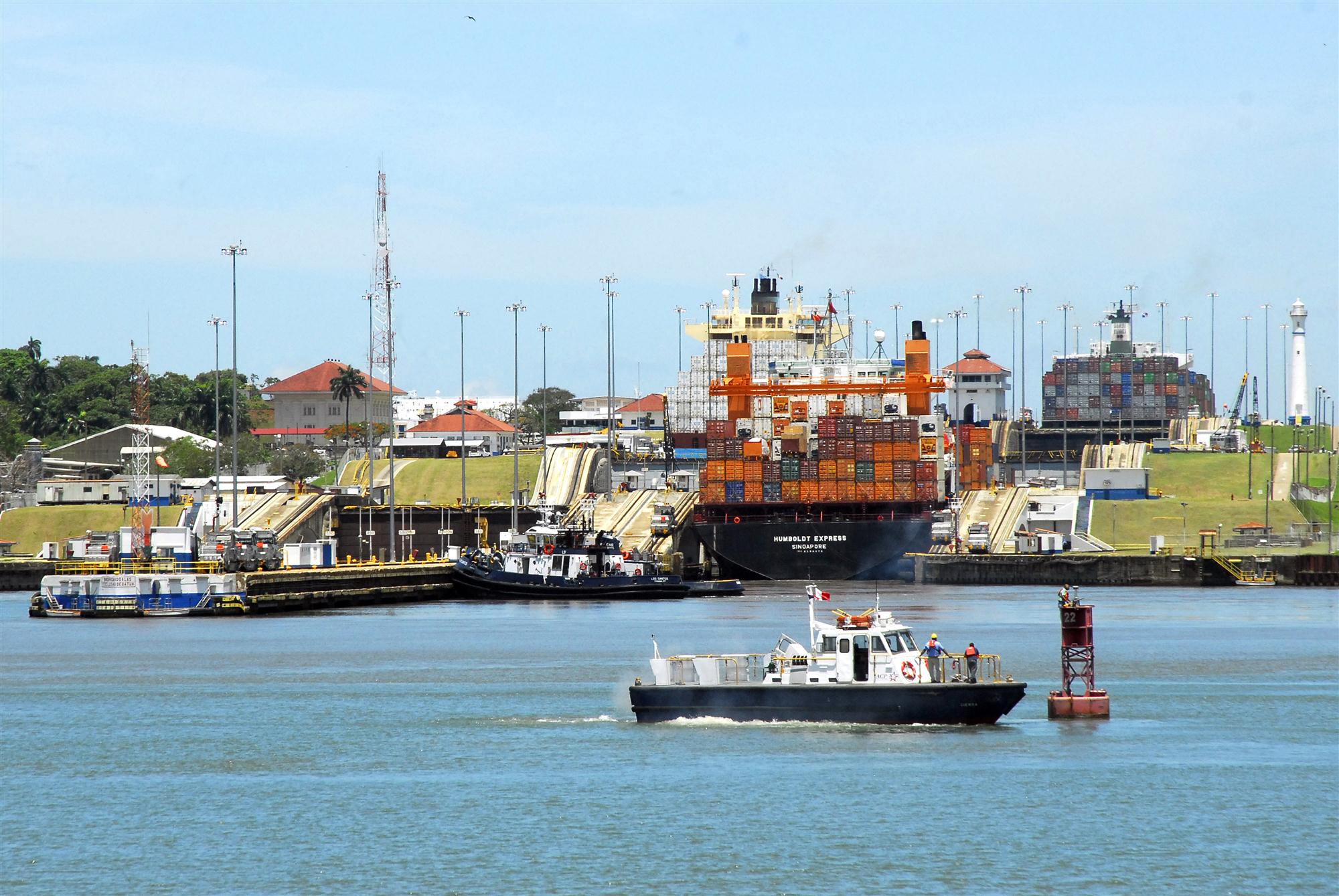Completion of the Panama Canal expansion project is less than three months away, a high-ranking official at the Panama Canal Authority told attendees of the Georgia Foreign Trade Conference in Saint Simons Island, Georgia.
 “We are about eight to 10 weeks away from completion,” said Oscar Bazán, executive vice president for planning and business development. “We have been talking to our contractors, and the date [the expansion will open for testing] remains between the last week of April or early May, for a commercial opening in July.”
“We are about eight to 10 weeks away from completion,” said Oscar Bazán, executive vice president for planning and business development. “We have been talking to our contractors, and the date [the expansion will open for testing] remains between the last week of April or early May, for a commercial opening in July.”
Bazán started his presentation by saying that every time he speaks at an event, “someone will stand up and ask me ‘when’? The answer to that question is that we are almost there. And I hope that this is my last presentation of the expansion progress.”
The expansion comes none too soon for the canal, which reached maximum capacity of 340 million tons in 2015. “We also broke records in terms of revenue, with US$2.6 billion this past year,” Bazán said.
As of December, the canal’s expansion progress was tabbed at 96%.
As tonnage has increased, the number of transits remains nearly unchanged from years ago, thanks to the steady increase in vessel size. The canal saw 13,660 vessel transits in 2013 compared to 13,874 in 2015. Reported tonnage in 2013 was 320.6 million tons, compared to 340.8 million tons in 2015.
While containers continue to make up the greatest share of canal transits, Bazán said, dry bulk has also become very important to the authority, “mainly because of grain coming out of the US, [but we have also seen a growth in] coal coming from Colombia and iron ore that we were not expecting coming from the Amazon rain forest.”
Roll-on roll-off activity has also grown, due largely to the rapid increase in automobile manufacturing in Mexico. “There are now 15 new car manufacturers in Mexico that are impacting positively traffic through the canal,” he said. “We have seen a surge in terms of volumes because of a new redeployment of some of the carrier services not only in Asia, but also calling on the west coast of Mexico.”
Bazán said that the steady growth in seaborne trade has been reflected in tonnage growth going through the canal. According to canal statistics, 16% of US exports use the canal, and 7% of US imports. US exports and imports combined represent 68% of all canal traffic, he said.
Time and distance savings over other routes for cargo bound to or from the US continue to drive the popularity of the canal, Bazán said, while noting that over the past decade, the authority has seen a shift of some of the fleet to the Suez Canal. “The reason for this shift was that we were unable to accommodate the larger vessels, so some of the larger liner services went through Suez. With the expanded canal coming shortly, we are expecting [some of those] services to come back, and the reason is very simple: we are offering savings not only on transit time, but also on distance, and this will apply not only to container but also to vehicle carriers.”
The canal says that the time savings it offers from Northeast Asia to the US East Coast are 4,600 nautical miles, and 14 days, compared to transits via the Suez Canal.
Post-expansion, Bazán said, the canal will continue to see mostly container transits, with many of them heading toward ports in Georgia. “Thirty percent of total US import comes into Savannah,” he said. “For the Panama Canal, Savannah is a major destination.”
 The container segment is the most relevant segment for the canal. It generates 48% of the canal’s total revenue, and 51% of its activity, mostly moving cargo from Northeast Asia to the US East Coast.
The container segment is the most relevant segment for the canal. It generates 48% of the canal’s total revenue, and 51% of its activity, mostly moving cargo from Northeast Asia to the US East Coast.
Bazán told the audience that the authority is already studying how to further increase the canal’s capacity to accommodate future vessels. According to the authority, when the expansion is completed, the canal will be able to accommodate 97.5% of all vessels; by 2019, only 95.4% of the fleet will be able to use the canal.
He also said that the canal authority continues to take future competitors seriously, including the long-talked-about canal through Nicaragua and a possible coast-to-coast railway across Honduras. While no significant construction has taken place in Nicaragua (despite official announcements that construction of ports and locks were to begin before the end of 2015), and any future Honduran railway line is in only the earliest of planning stages, the authority has undertaken a diversification strategy, including plans for construction of the Corozal Container Terminal.
In December, the authority’s board of directors decided to authorize a Request for Qualifications (RFQ) for the terminal after 13 of the world’s largest port operators formally expressed an interest to develop and operate the Corozal Port, the authority said in a statement late last year.
“What we’ve seen confirms the strong demand existing for the canal and the need for greater port capacity on its Pacific side,” Panama Canal administrator Jorge L. Quijano said at the time of the announcement.
The Corozal Container Terminal will be located at the Pacific entrance of the waterway, and is intended to be a common-user container-transhipment terminal which will distribute cargo to the region, including the west coast of South America, Central America and the Caribbean. It will provide services to reposition empty containers and handle local cargo, and is the first of several planned projects to enhance the country’s logistics capacity, which Bazán says also includes a ro-ro terminal, a logistics park and an LNG terminal.
By Gregory Glass
Asia Cargo News | Saint Simons Island, Georgia